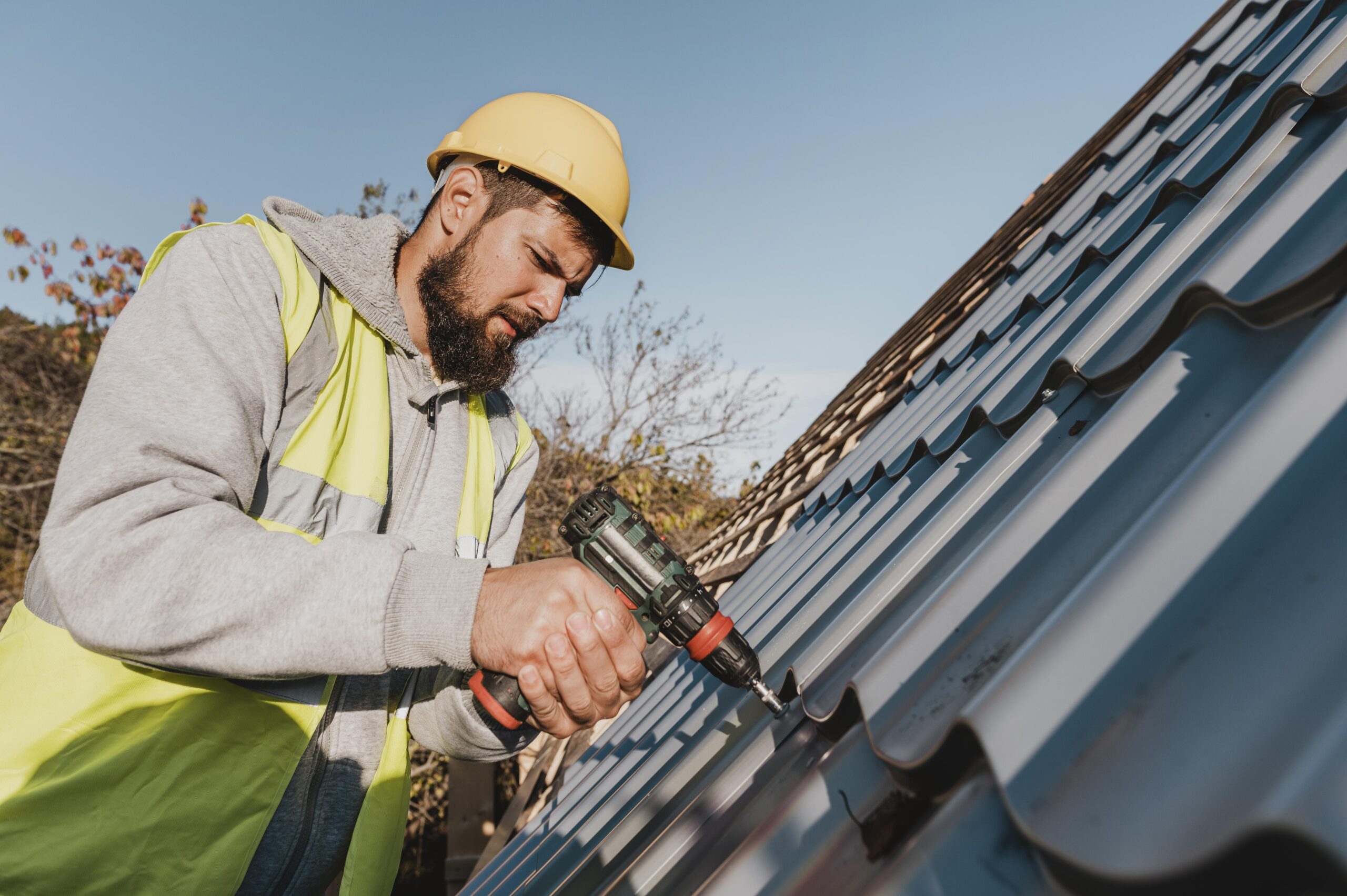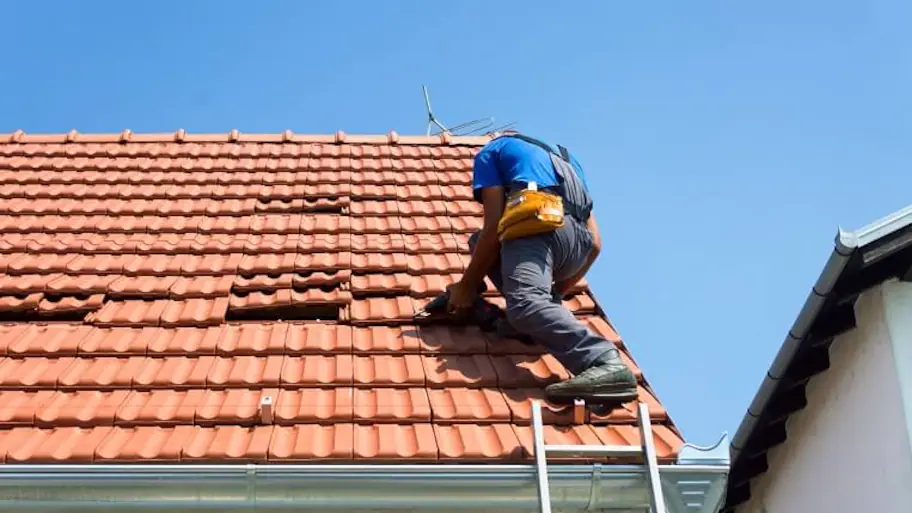Oahu Roofing: Trusted Roofing Solutions for Homes and Companies
Oahu Roofing: Trusted Roofing Solutions for Homes and Companies
Blog Article
Comprehending the Different Kinds Of Roofing Systems: A Comprehensive Guide for Homeowners
In the world of homeownership, picking the appropriate roofing style is a decision that lugs substantial effects for both functionality and aesthetic allure. With a range of options-- ranging from the standard gable to the contemporary level-- each type presents one-of-a-kind benefits and difficulties that should align with the homeowner's specific demands and ecological considerations. Comprehending these distinctions not just help in making an informed option however also affects long-lasting upkeep and power effectiveness. As we discover the intricacies of various roof kinds, it ends up being noticeable that a person dimension does not fit all; the best selection might shock you.
Saddleback Roof
Saddleback roofs, identified by their triangular form, are among the most prominent roof covering designs due to their simpleness and effectiveness in losing water and snow. This layout features 2 sloping sides that satisfy at a ridge, enabling for effective water drainage and decreasing the danger of water accumulation. The high pitch commonly related to saddleback roofs improves their capability to handle hefty precipitation, making them appropriate for numerous climates.
In addition to their functional benefits, saddleback roofs supply aesthetic flexibility. They can be adapted to various building designs, from typical to modern homes. The design can likewise fit added attributes such as dormer home windows, which enhance natural light and ventilation in the attic area.
Additionally, gable roof coverings provide sufficient space for insulation, contributing to energy effectiveness. House owners can pick from a selection of roof covering products, consisting of asphalt tiles, steel, and floor tiles, better boosting customization alternatives.
Regardless of their benefits, gable roof coverings might call for extra support in areas prone to high winds or heavy snowfall. Overall, the saddleback roof remains a popular selection as a result of its mix of performance, longevity, and aesthetic allure.
Apartment Roofs
Level roofings are typically acknowledged for their minimal style and functional applications, especially in commercial and commercial settings (oahu roofing). These roof coverings feature a horizontal or virtually straight surface area, which permits easy construction and functional room use. While they may lack the visual charm of pitched roofings, flat roof coverings provide many advantages, specifically in metropolitan environments where optimizing space is crucial
Among the primary advantages of level roofing systems is their accessibility. House owners can make use of the roofing space for numerous purposes, such as rooftop gardens, balconies, or solar panel setups. In addition, level roofs are generally a lot more economical to preserve and install compared to their sloped counterparts, as they call for less products and labor.
Nevertheless, flat roofs do present specific obstacles. Proper drainage is vital to prevent water merging, which can bring about leaks and architectural damages. Hence, selecting top quality waterproofing products and normal evaluations are important for ensuring durability. Typical products made use of for flat roofing systems consist of built-up roof covering (BUR), modified bitumen, and single-ply membranes, each offering unique advantages. Overall, flat roofing systems work as a useful and adaptable option for lots of house owners and companies alike.
Hip Roofs
Hip roofs are characterized by their sloped sides that merge on top, developing a ridge. This style stands out from gable roofing systems, as all four sides of a hip roof incline downwards towards the walls, providing an extra secure structure. The angle of the slopes can differ, permitting adaptability in architectural aesthetic appeals and performance.
One of the key advantages of hip roofs is their capacity to stand up to heavy winds and adverse climate conditions. The sloped surface areas allow better water drain, minimizing the risk of leakages and water damages. In addition, hip roofing systems offer raised attic room, which can be used for storage space and even exchanged livable areas.
However, building a hip roof can be extra intricate and pricey than simpler roof types, such as saddleback roofs. The added product and labor associated with producing the inclines and making certain appropriate architectural stability can result in greater expenditures. Regardless of these downsides, many property owners prefer hip roofing systems for their sturdiness, visual allure, and potential for energy performance.
Mansard Roofing Systems
Mansard roofs, commonly identified by their unique four-sided design, attribute 2 inclines on each side, with the reduced slope being steeper than the top. This building style, originating from France in the 17th century, is not only cosmetically attractive but useful, as it makes the most of the functional room in the upper floorings of a building. The high lower incline permits for more clearance, making it an optimal selection for loft spaces or attic rooms, which can be exchanged living spaces.
Mansard roofing systems are defined by their convenience, suiting numerous building designs, from typical to modern. They can be constructed with different products, consisting of asphalt tiles, slate, or steel, giving home owners with an array of alternatives to match their choices and spending plans. Furthermore, the style enables the integration of dormer windows, boosting all-natural light and air flow in the upper levels.
However, it is vital to take into consideration the possible downsides. Mansard roofing systems may require even more upkeep because of the complexity of their layout, and their high slopes can be challenging for snow and rainfall overflow. In general, mansard roofs combine style with functionality, making them a popular choice among home owners looking for unique building functions.
Shed Roofs
As home owners progressively seek simpleness and performance in their building styles, lost roofings have arised as a popular selection. Defined by a solitary sloping airplane, a shed roof provides a minimalist visual that complements different home styles, from contemporary to rustic.
One of the key advantages of a shed roofing is its straightforward building, which commonly translates to reduce labor and product prices. This design enables for effective water drain, reducing the danger of leakages and water damages. In addition, the vertical slope offers adequate room for skylights, enhancing natural light within the interior.
Dropped roofings additionally offer flexibility in terms of use. They can be properly incorporated right into enhancements, garages, or outdoor structures like sheds and pavilions. Furthermore, this roof covering style can suit different roofing products, including steel, asphalt tiles, and even environment-friendly roofs, aligning with environmentally friendly efforts.
Nevertheless, it is vital to take into consideration local environment problems, as heavy snow loads may necessitate changes to the roof covering's angle or structure. On the whole, lost roofing systems provide a sensible and aesthetically pleasing alternative for home owners aiming to make the most of functionality without jeopardizing style.
Final Thought


Gable roof coverings, characterized by their triangular form, are amongst the most popular roofing designs due to their simpleness and effectiveness in dropping water and snow. oahu roofing. The high pitch commonly associated with gable roofings improves their ability to deal with hefty rainfall, making them ideal for various climates
While they may lack the visual allure of pitched roof coverings, flat roofing systems use many benefits, specifically in urban settings where making the most of area is vital.

Report this page